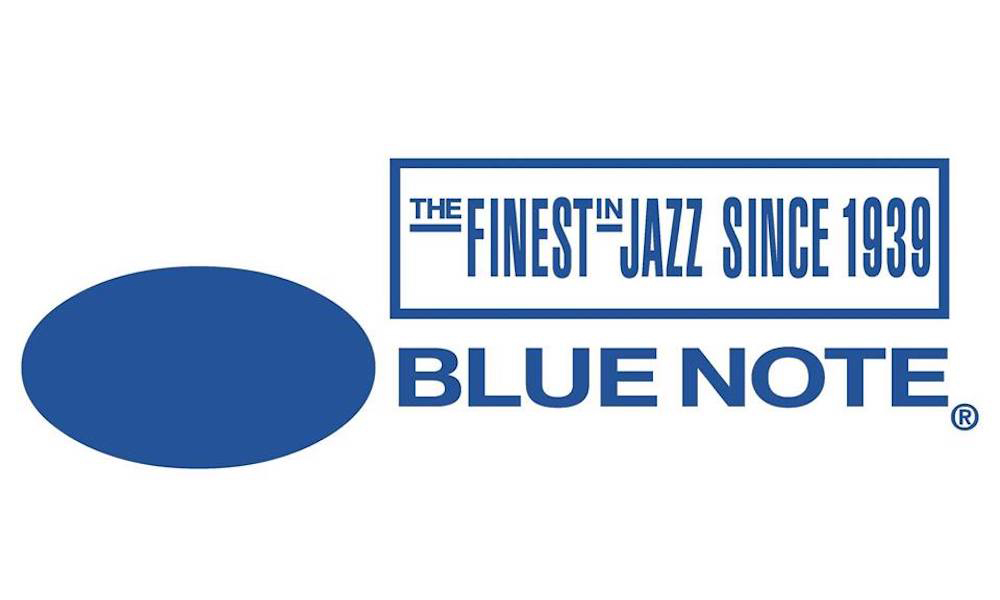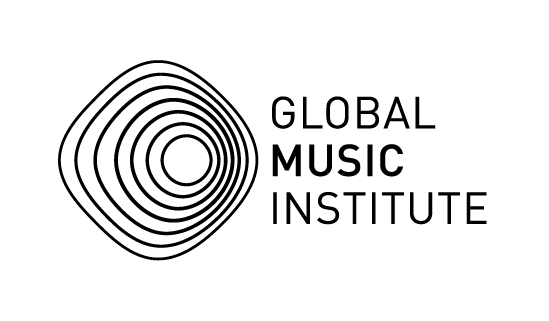
22 Oct Blue Note Records – Six Albums Recommended by Tomos Williams
Blue Note Records is an American jazz record label owned by Universal Music Group and operated under Capitol Music Group. Established in 1939 by Alfred Lion and Max Margulis, it derived its name from the blue notes of jazz and the blues.
In this blog #GMITribeMentor Tomos William recommends a few albums, and specific tracks – but, as he says, “with the caveat that I could have chosen a different 6 albums for every day of the week for the next few month! There are so many great Blue Note albums”.
—–
How did you get into jazz? That’s one of the questions I’m often asked. Looking back, one of the central experiences was hearing a few songs that I’d never heard the like of. They were Horace Silver’s ‘Song For My Father’ and Lee Morgan’s ‘Sidewinder’ – both recorded for Blue Note Records!
As a listener and student of jazz, the sheer volume of music that’s out there can be overwhelming, but if you’d like a way ‘in’ to jazz or simply to hear some top class music performed by incredible musicians, you could listen to almost anything recorded on the Blue Note label.
But to start, here’s a very, very brief synopsis of Blue Note Records:
As a rule the ‘Blue Note Sound’ generally refers to what is often called ‘hard-bop’ which was recorded during the late fifties into the mid sixties. But the life of Blue Note starts before that, and still exists to this day.
Some of the earlier jazz – the beginnings of Be-bop that was recorded on Blue Note include The Genius of Modern Music by Thelonious Monk in 1949, Miles Davis Volume 1 and 2 in the early fiftes (1952-54), The Fabulous Fats Navarro (1949) and the Amazing Bud Powell (1949-53).
I won’t talk about these in this blog, but they are all historic albums that need serious checking out. Amazing music.
There’s also what came later (mid-60s onwards) and was called ‘The New Thing’ – which was the more avant-garde and freer style of jazz that was developing at this time. Blue Note records embraced the changes that were happening in the music and recorded many seminal albums in this style too (Eric Dolphy – Out To Lunch, Cecil Taylor – Conquistadores and Unit Structures, Ornette Coleman live at the Golden Circle, Don Cherry – Complete Communion and Symphony for Improvisers, Grachan Monchur III – Evolution, Andrew Hill – Point of Departure, Judgement, Pax, Bobby Hutcherson – Dialogue). These are all great records too, which deserve another blog on their own. Check these out too.
But – back to my personal experience and what got me hooked onto jazz.
The hard-bop style was brilliantly encapsulated on Lee Morgan’s Sidewinder which became a massive hit at the time.
The entire album is a classic, – from the famous jazz boogaloo of the title track to the fiery improvisation on Totem Pole and Gary’s Notebook.
The Sidewinder itself is ten and a half minutes of pure blues drenched jazz. Lee Morgan plays some of his finest licks, but still sounds completely fresh. Joe Henderson on tenor sax is majestic, Barry Harris on piano is glorious (check out when he starts soloing in octaves – both hands playing the same lines) while Bob Cranshaw and the light ride cymbal of Billy Higgins provide an immaculate swingin’ rhythm section.
The whole album deserves serious listening – my pick would be the title track and Totem Pole. Brilliant hard-bop!
Horace Silver’s Song For My Father was another gateway track for me.
I’d never quite heard anything like Joe Henderson’s solo on the title track. He rolls, riffs, rumbles and finally squacks his way through a climactic tenor sax solo. The first four bass notes of the titel track instantly grab you – it’s so simple, but so effective. Horace Silver was a genuis who’s under-appreciated these days it seems. He bought deep funk and soul to every situation. He was another central figure in the hard-bop movement and the ‘Blue Note’ sound. Horace was renouned for his vast library of originals – almost all of his numerous albums on Blue Note were comprised entirely of his own compositions and his style is instantly recognisable. Song My Father has become a modern jazz standard but the album also includes a wonderful reading of his gorgeous ‘Lonely Woman’ as well as the brilliant ‘The Natives are restless tonight’. But that Joe Henderson solo – go check it out…
Both these albums were recorded in 1964/65 as was Wayne Shorter’s Speak No Evil.
In the space of less than 12 months, Wayne Shorter recorded 4 absolute classics for Blue Note (Night Dreamer, Juju, Speak no Evil and The Soothsayer). Speak No Evil is less in the ‘hard-bop’ vain, more explorative and under the influence of the music of Miles Davis’ at this time – which is understandable, since half the band were in Miles’ band. Wayne Shorter on sax, Herbie Hancock on piano and Ron Carter on bass, were all members of Miles’ current working quintet, while Freddie Hubbard on trumpet had worked with Wayne Shorter as a member of Art Blakey’s Jazz Messengers and on numerous other Blue Note dates, while Elvin Jones on drums was making waves at the time in the classic John Coltrane Quartet. Some band! And every song is a winner – wonderful melodies, harmonic sophistication, incredible group interplay and stand-out soloing. It’s as ‘perfect’ a studio session as you can get – the level of musicianship and musicality on display is staggering and the compositions are so stong – from the track Speak No Evil to Witch Hunt and Infant Eyes, all of them modern jazz standards by now. Wayne Shorter went on to create incredible music throughout his career, but his place in the pantheon of jazz greats would be safe on evidence of this album alone.
Another slightly less hard-boppy Blue Note recording, yet still thoroughly within the labels remit is Larry Young’s Unity. Larry Young was a hammond organist – but not in the classic funky style of Jimmy Smith or Jimmy Mc Griff. Larry Young was influenced by Coltrane’s musical vision and he bought all of that onto the hammond organ. Initially a slightly fringe figure, his music has been re-evaluated of late and his genius is certainly receiving more recognition these days. He played on Miles Davis’s seminal Bitches Brew sessions and he started one of the very first jazz-rock fusion bands ‘Lifetime’ with Tony Williams on drums and John McLaughlin on guitar.
From it’s classic simple graphic cover (Blue Note were also very famous for their album sleeve designs and iconography, which went well with the music) to the burning music, Unity never lets up from the get-go.
The band comprises Joe Henderson on sax (again, you’ll find a link here – many of the same musicians appear on multiple Blue Note albums), a very young Woody Shaw on trumpet and a burning Elvin Jones on drums. There is no bass – since the foot pedals of the hammond organ played by Larry also provide the bass. Three songs are originals by Woody Shaw, there’s a Thelonious Monk cover, (which is an organ and drums duet) and there’s one standard ‘Softly As in a Morning Sunrise’ – which is simply sensational. The album is well known for the Woody Shaw originals which have become modern jazz standards (Moontrane, Beyond All Limits and Zoltan), but for me ‘Softly…’ is the stand out track. It simply burns. Joe Henderson plays the initial tune relatively straight and then heads into a solo that builds using his trade mark riffs, licks and repetative figures, with Larry Young and Elvin encouraging and pushing him all the way. Woody Shaw takes over with an immense abstract solo full of pentatonic patterns and high note excursions, before Larry Young takes it to the next level accompanied by Elvin Jones’ slashing cymbals and a killer backing riff from the horns. That’s one way of breathing new life into a jazz ‘standard’ and taking the traditional hammond organ sound into new territory. Breathtaking!
Continuing in the breathtaking vein, I couldn’t write about Blue Note Records and hard-bop without including the God-father of that sound – Art Blakey and his band the ‘Jazz Messengers’. Like Horace Silver, Art Blakey recorded almost exclusively for Blue Note during the 1950s-1960s and there are numerous albums of his that I could have included in this blog.
Go and ckeck out Moanin’, Live at Cafe Bohemia, Mosaic, Buhaina’s Delight, The Big Beat, Indestructible, and many more (!!) but the album I’m chosing is Free For All recorded in 1964. The energy and fire on this record is ferocious. It’s almost as if the music is bursting from the speakers (or headphones) when you listen to it – the energy simply cannot be contained! Art Blakey was renouned for his fire and thunderous drumming, but this really is something else – even for him and his band, it’s truly incredible.
Art had many different line-ups for the Jazz Messengers during his long lifetime – he liked to find young musicians, then when they got too old, move them on and find more youngsters. In this way the Jazz Messengers became its own institution. The line-up on Free For All was one of the finest editions of the Messengers – with Freddie Hubbard on trumpet and Wayne Shorter on sax (recognise those names!) and the addition of Curtis Fuller on trombone, making it a three horn front line, for an even meatier, heavier sound, joined by Cedar Walton on piano and Reggie Workman on bass. The title track Free For All is almost demonic and demented in equal measure. The melody is simply a vehicle for some frenetic and frantic blowing from the three forntline stars. Wayne Shorter has never sounded more searing or impassioned, Curtis Fuller plays one of his best solos on record and Freddie Hubbard does his usual high note pyrotechnics and slick runs – all topped off by a manic drum solo. It’s a pretty exhausting listen. The Jazz Messengers recorded an intense version of Night in Tunisia and they’ve certainly recorded better, more intricate intense melodies (like Mosaic), but for sheer energy Free For All is un-surpassable. The title track is followed by Hammer Head and The Core, both equally energetic and full of passion, while Pensativa brings the album to a close in a slighly calmer vein.
Blue Note later folded in the 1970s, but was reborn in the mid-80s. I don’t want this blog to purely mention jazz from over 60 years ago by now (!) Blue Note have consistently recorded and released many of the best and most creative artists currently working. Stand out releases for me since the 1990s have been:
Greg Osby – 3-D Lifestyles and Black Book (where he fuses jazz with hip-hop and spoken word)
Brian Blade Fellowship -Perceptual
Jason Moran’s Bandwagon – Ten
Terrance Blanchard – A Tale of God’s Will
and even more recently Ambrose Akinmusire’s debut album – When The Heart Emerges Glistening and Origami Harvest, and Immanuel Wilkins – Omega.
These are all modern jazz classics – but there is some magic dust on so much of the music created in that 1950s-1960s period. It might just be the sheer quantity of exceptional music – there are so many names that I could have mentioned (Grant Green, Donald Byrd, Kenny Dorham, Jackie McLean, Sonny Clarke, Blue Mitchel, Duke Pearson, Dexter Gordon, Hank Mobley, McCoy Tyner, Thad Jones, Jimmy Smith, Stanley Turrentine, Lou Donaldson, Big John Patton) and even some quite obscure musicians recorded classics for Blue Note (Johnny Coles, Tina Brooks, Ike Quebec) not to ignore the musicians already mentioned in this blog, who all had brilliant solo careers and numerous albums recorded on Blue Note under their own name (Joe Henderson, Freddie Hubbard, Herbie Hancock, Tony Williams, Andrew Hill, Bobby Hutcherson).
So take some time and dive into the Blue Note catalogue. You won’t be disappointed, there’s a wealth of incredible jazz music waiting to be discovered. Just pick one of the names mentioned in this blog and you’ll be introduced to some life-changing music!
—
#GMITribeMentor Tomos Williams is a musician based in Cardiff, Wales, UK. He specialises in traversing the breaks and the cracks between musics and genres. Primarily a ‘jazz’ musician he leads his Welsh folk/jazz sextet Burum, which plays modern jazz interpretations of Welsh folk melodies, as well as Khamira (alongside GMI’s Director and Co-Founder, Aditya Balani) – a band comprising of Welsh and Indian musicians that plays original improvised world music.
Tomos has a wide raging knowledge of jazz, it’s history and social significance and his enthusiasm and passion for the music was recently rewarded with a jazz show on BBC Radio Cymru (Welsh language radio) where he introduced new jazz, Welsh jazz as well as the masters to a new audience in Wales.








No Comments